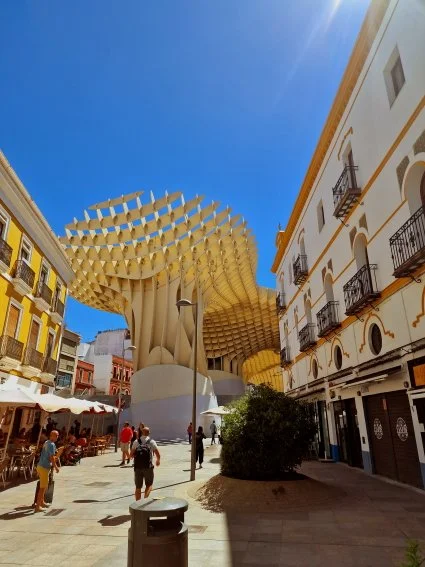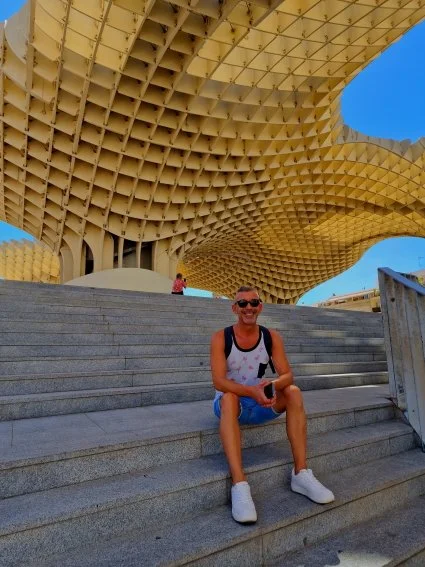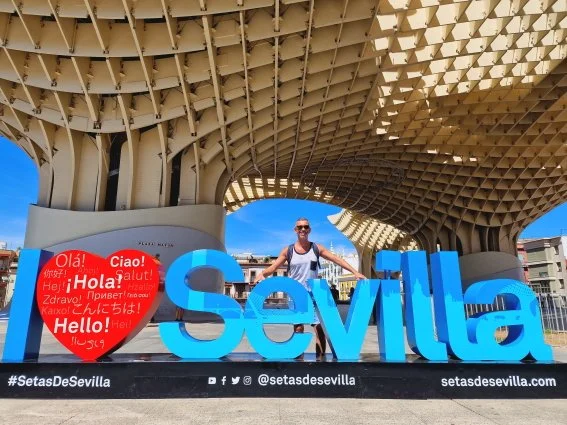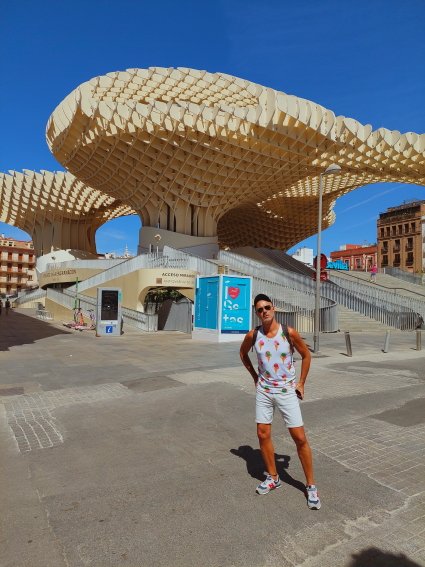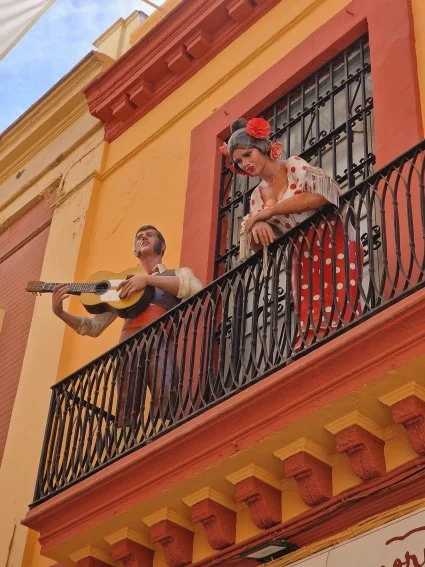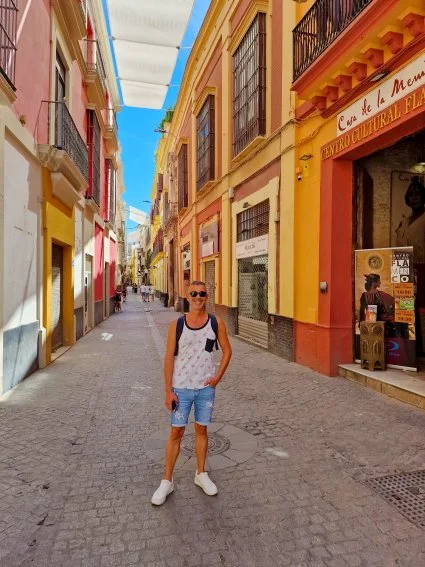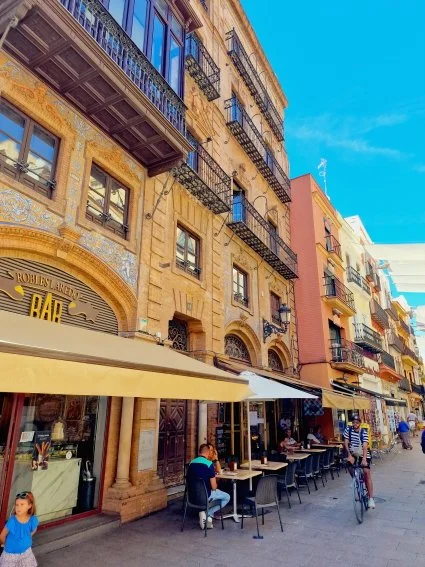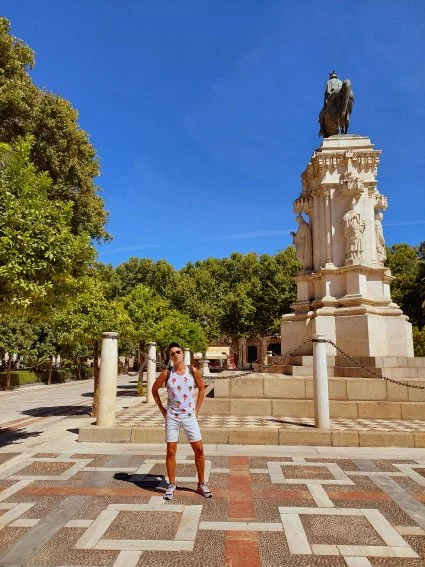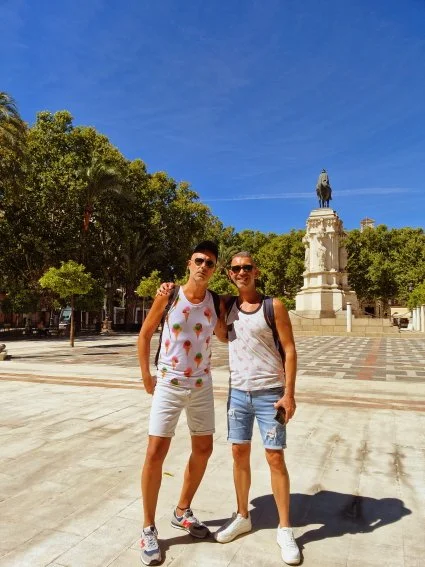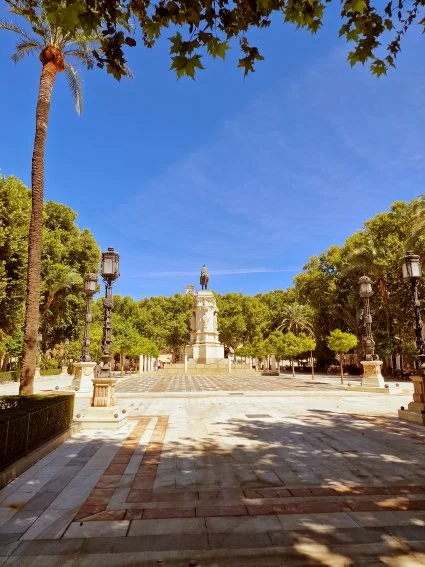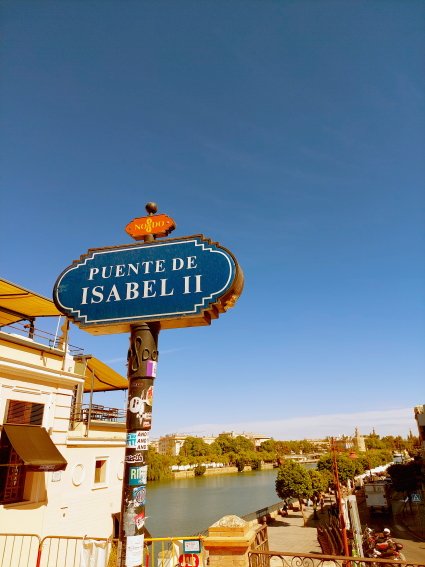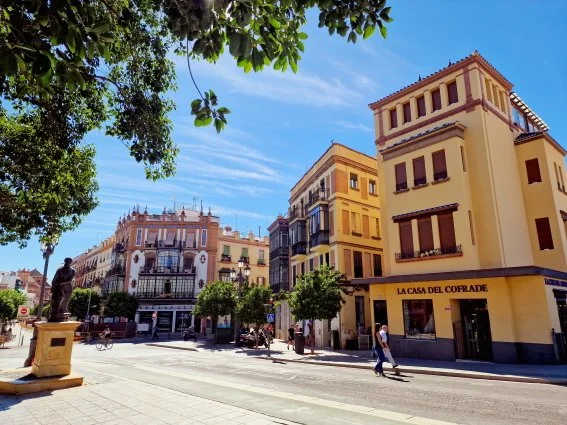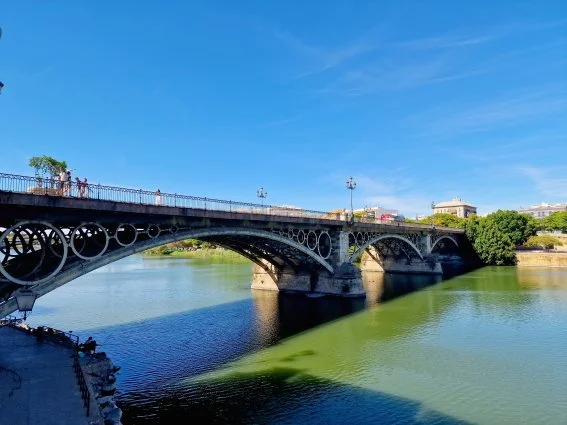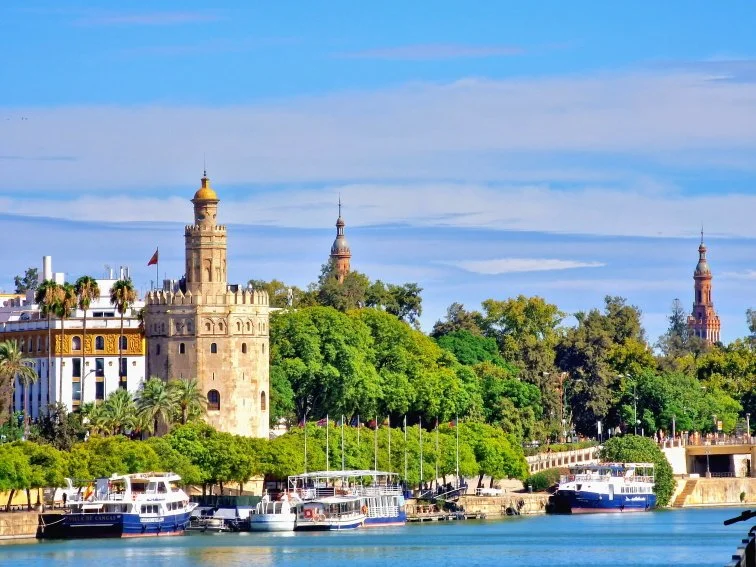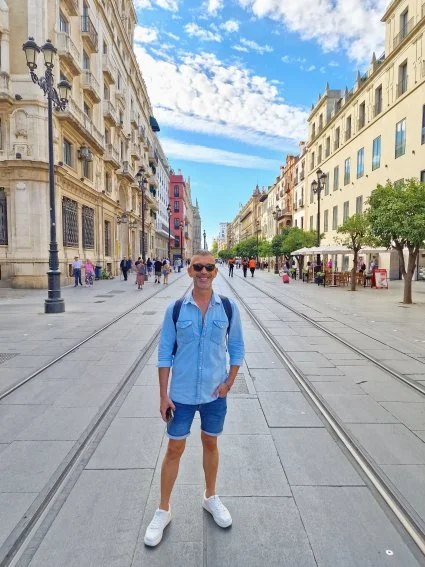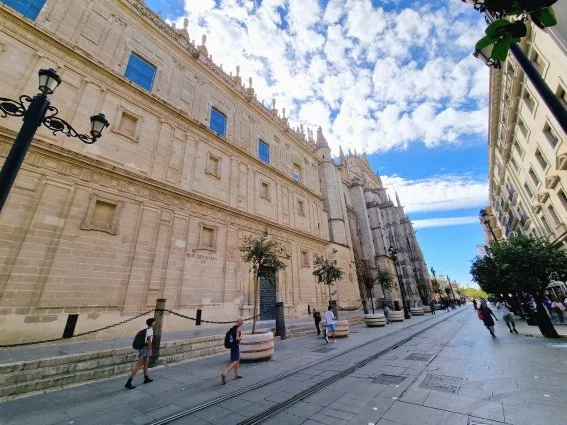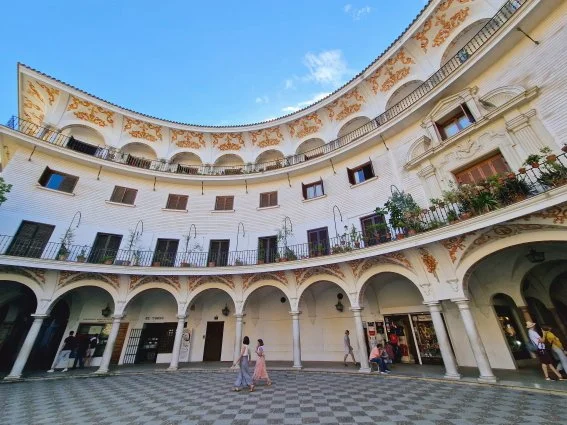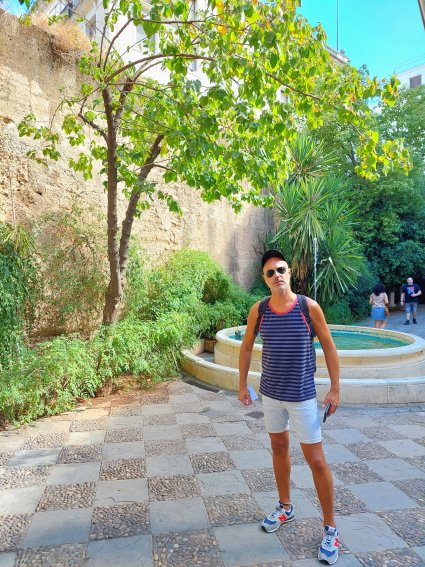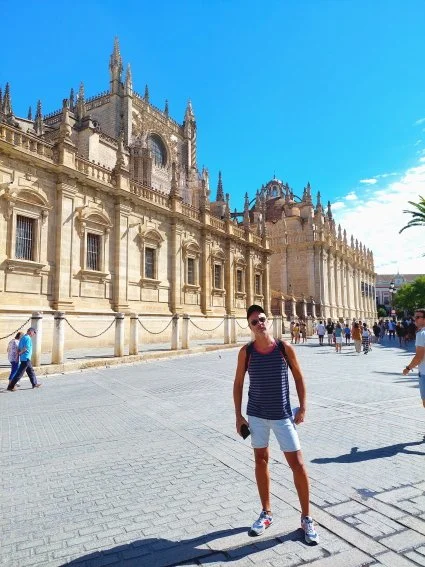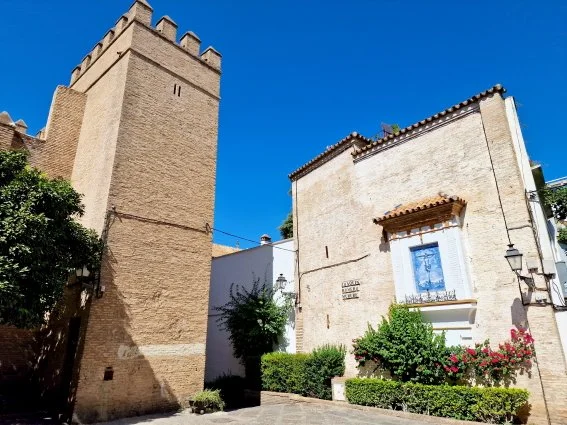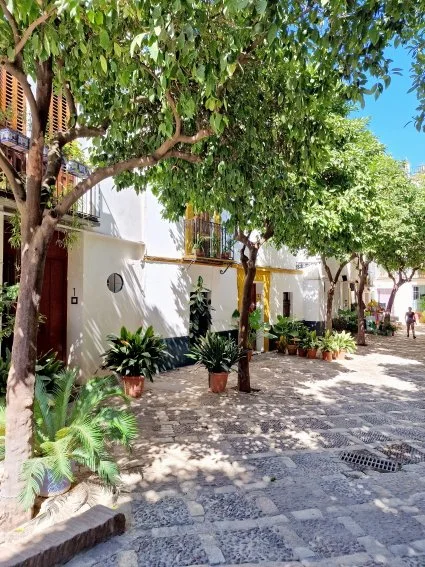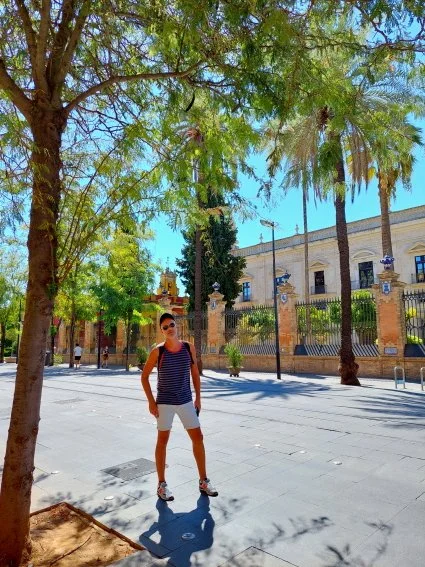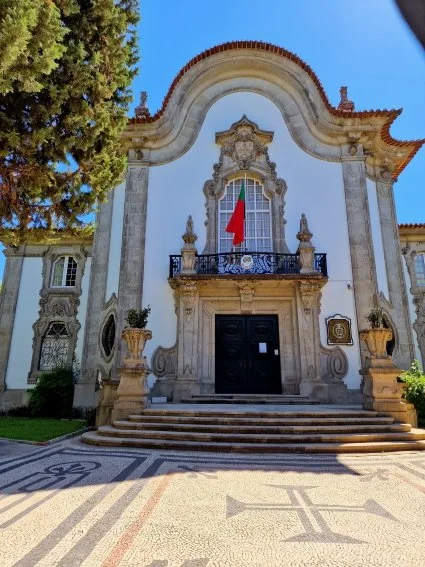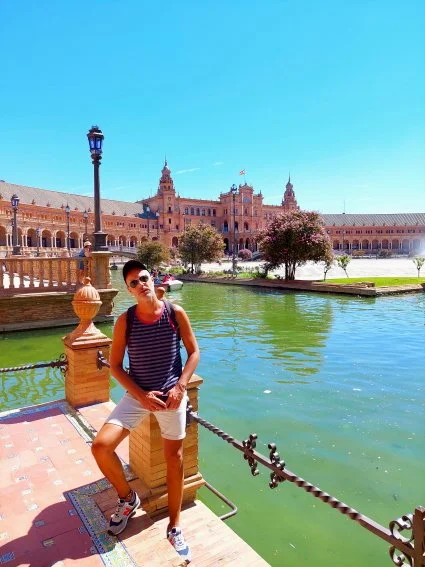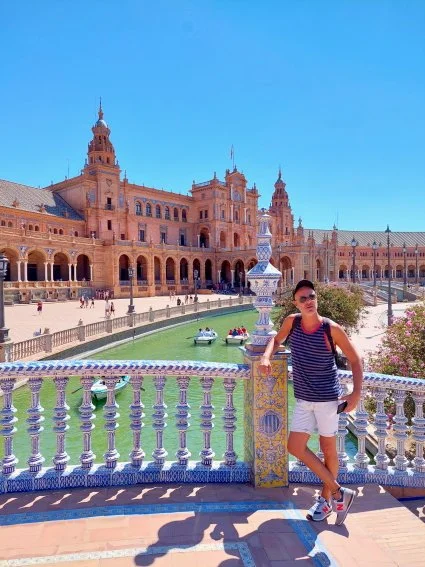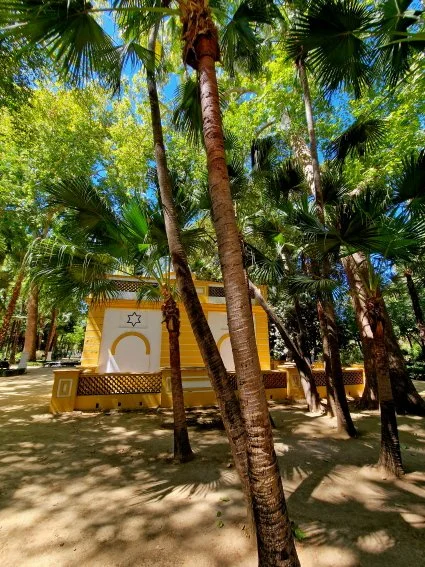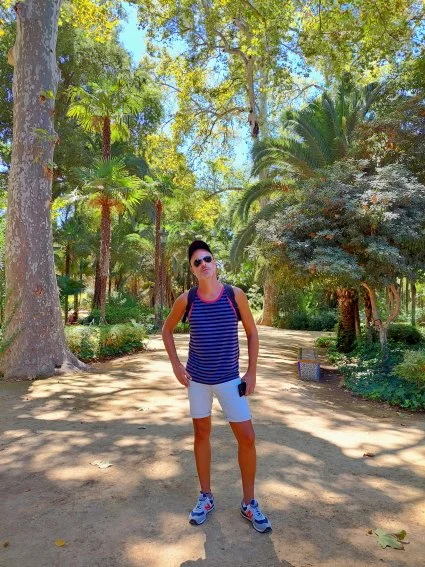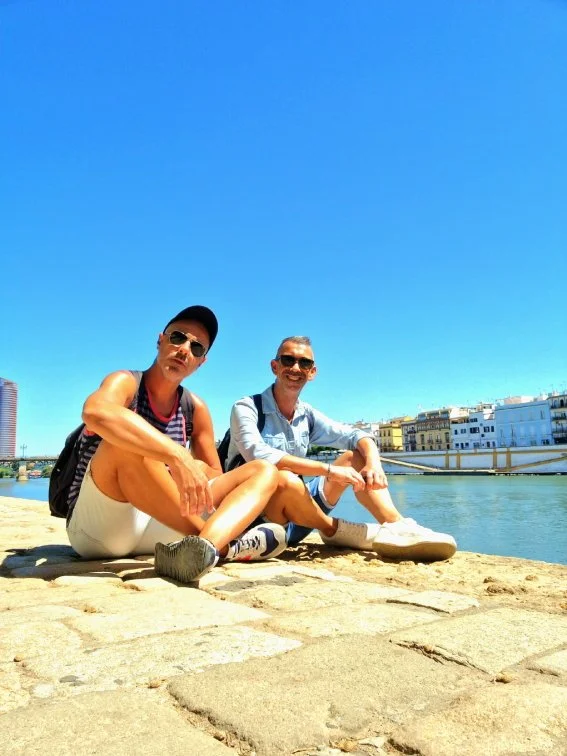
SEVILLE
Seville is located in the south of Spain and is the largest city in the mythical autonomous region of Andalusia and is one of those cities that you only need to visit once to want to return again.
As soon as you enter the city, you are invited to discover amazing palaces, flowery gardens, ancient streets and all its giant culture.
As soon as you start walking down the street, you immediately notice that you are in an Arab-influenced city. Get ready for a historic, cultural, gastronomic trip with a nightlife that is the envy of many of the world's great capitals.
If you visit the city in the height of summer, prepare for the scorching temperatures, so if you don't like too much heat, visit in Spring or Autumn.
We chose to go by bus to Seville, as the trip was quick and as we were going to more destinations, it is cheaper to go by bus than with your own car. For the first time we used the company Flexibus. We bought the tickets through the app and everything went smoothly.
We arrived around 1pm to Plaza de Armas. We had already booked an apartment through Airbnb in the center of gay night (Alameda Hercules) which is close to the old center and everything there is to visit on foot. From Plaza de Armas to Alameda Hercules, it's about a 15-minute walk or you can use apps like Uber, Bolt or the most used in Seville, Tuway, which is what we did.
Since we didn't have much time to stay in Seville, we gave up the traditional 'siesta' and set off on an adventure through the fantastic alleys and squares of the city.
The starting point was the Metropol Parasol or also known as "Setas de Sevilla", one of the largest wooden buildings in the world.
This imposing building, on Plaza de la Encarnación, in the heart of the city's historic centre, does not go unnoticed by tourists or locals alike. You may or may not go up to the terrace and contemplate all its architecture. This monument is called “Arrows”, due to its peculiar mushroom shape.
After enjoying all the magic of the square where the Metropol is located, we went to the Casco Antiguo, walking between the various streets, which in themselves, are one of the attractions of Seville, passing by the Palacio de la Condessa Lebrija, Palacio de las Duenas and Iglesia Colegial del Divino Salvador.
The next stop was Plaza Nueva, in the center of the city and the largest square in the city, where the imposing building of the Ayuntamiento de Sevilla is also located. Here come all the main streets of Seville.
Then we walked through the main shopping streets of the city, if you're a shopping fan, stop by Calle Sierpes and Calle Tetuas.
There are 2 pedestrian streets, with lots of shops, including lots of gift shops, taverns and tapas bars with their tables placed on the sidewalks, where they invite us to "tapear" and a "copa" of beer.
Next stop was the Lonja del Barranco Market, located right next to the famous Triana Bridge.
Installed in a building designed by Gustave Eiffel, created as a fish market, now a gourmet market with a wide variety of food at a good price.
Right next to it is the D. Isabel II Bridge or Ponte de Triana. The Triana bridge is one of the main points of interest in the capital, where we guarantee a pleasant environment for strolling while enjoying the views of the Guadalquivir River, both in broad daylight and at night. This bridge connects the famous and typical neighborhood of Triana to the city centre.
As it was getting late and we were tired from the intense day, we decided to go back to the apartment, passing by the gay bars to see where they were located ( SEVILLE BY NIGHT HERE ).
The second day of our visit to Seville was dedicated to visiting the city's most touristic and emblematic places. We went straight to Plaza del Cabildo, which is located in the Arenal neighborhood, right in Seville's Cascuo Antiguo.
This is a square little visited by tourists, because it goes unnoticed, but it is worth a visit. With a circular shape where you can see some ruins (ancient wall that protected Seville), what is most impressive is the decoration that it displays and that well deserves to be well observed. It also has other points of interest such as some shops and on Sundays there is a flea market. It is very close to the Seville Cathedral.
We highlight other important crossing points that you cannot miss:
- Walk and get lost in the Barrio de Santa Cruz: it is the second largest Jewish district in the Iberian Peninsula, one of the most special and authentic districts in Seville. Full of charm, color and flavor, it is an ideal area to get lost in its narrow streets and see some of the city's points of interest.
- Seville Cathedral: the largest Gothic building in Europe, Seville Cathedral is located in the heart of the city on Avenida de la Constitución and invites travelers from all over the world to admire its impressive architecture.
- Plaza del Triunfo : the square that brings together three UNESCO heritage sites: the Archivo General de Indias, the Real Alcazar and the Cathedral of Seville.
- Alcazar: one of the most representative monumental complexes of the city, the country and the culture of the Mediterranean.
- Giralda Tower: born as the minaret of the mosque and later converted into the bell tower of the Cathedral.
- Paseo Catalina da Ribeira (gardens)
- Royal Tobacco Factory
- Plaza de España: built for the Ibero-American Exhibition of 1929, the Plaza de España in Seville is a monumental and majestic space that is one of the main symbols of identity not only for Seville, but also for the whole of Spain. Located in the Parque de Maria Luísa, in the shape of a giant half moon presided over by a large central building that is framed by two Baroque-style towers over 70 meters high and where you can see and watch the traditional Flamenco.
Plaza de España is one of those places that surprises for its beauty, its size and its architecture. It's really worth spending some time there.
- Maria Luisa Park: it is next to Plaza de España, being the main green area of the city containing in its giant interior several monuments, such as Monument to Cervantes, Fonte dos Leões, Plaza America, among others.
- Torre del Oro: it was an old defensive construction with a strategic location on the banks of the Guadalquivir River, which currently houses the Naval Museum.
From Torre del Oro, take a walk along the Guadalquivir River.
Seville was one of several cities in the world that we have visited that surprised us very positively and since it is close to Portugal, we will certainly go there many more times.
For us, Seville is one of the best surprises in Spain. We love Seville and trust us, visit Seville and stay as many nights as possible because there is so much to do and see.
We enjoyed a lot and stayed long enough to leave enchanted and completely surprised by the charm and reception of the Andalusian capital. We will be back!
From Seville we went to Malta. See our 10 day trip in Malta HERE. As a tip, if you don't want to take public transport to Seville airport, we recommend the Tuway app, where you can make a reservation for the day and time you want and the trip costs about 15€ from the center of Seville to the airport.




